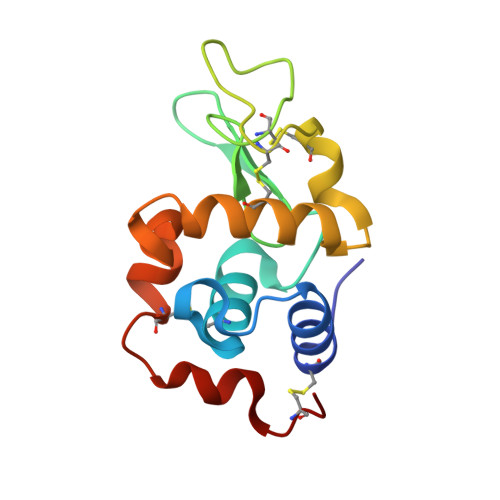The role of Cinnamaldehyde and Phenyl ethyl alcohol as two types of precipitants affecting protein hydration levels.
Seraj, Z., Seyedarabi, A.(2019) Int J Biol Macromol 146: 705-715
- PubMed: 31887389
- DOI: https://doi.org/10.1016/j.ijbiomac.2019.12.204
- Primary Citation of Related Structures:
6ABZ, 6AGN, 6AGR - PubMed Abstract:
Release of water is the main force which drives proteins towards crystallisation (giving rise to protein crystals for crystallography) and aggregation (main cause of neurodegenerative diseases), and as such it is possible to make changes in the crystallisation/aggregation process by using compounds which are able to reduce the amount of water molecules around proteins. Cinnamaldehyde and Phenyl ethyl alcohol are the active constituents of cinnamon and rose flower, respectively. Traditional Iranian Medicine (TIM) suggests the use of cinnamon and rose flower for the reduction of excess coldness and wetness from the brain of patients suffering from Dementia. Using crystallisation as a model system and X-ray crystallography, we tested whether Cinnamaldehyde or Phenyl ethyl alcohol can mimic the role of precipitants resulting in the formation of crystals of HEWL (as a model protein) by releasing water from the surrounding protein environment. Results have revealed that both Cinnamaldehyde and Phenyl ethyl alcohol, in particular, were capable to adequately act as 'precipitants' but in the presence of NaCl (as a salt), resulting in better crystals of HEWL by changing the amount of charge and/or making water molecules unavailable in the symmetry related position, in line with the role suggested for these compounds by TIM.
- Department of Biochemistry, Institute of Biochemistry and Biophysics, University of Tehran, Tehran 1417614411, Iran.
Organizational Affiliation:





















